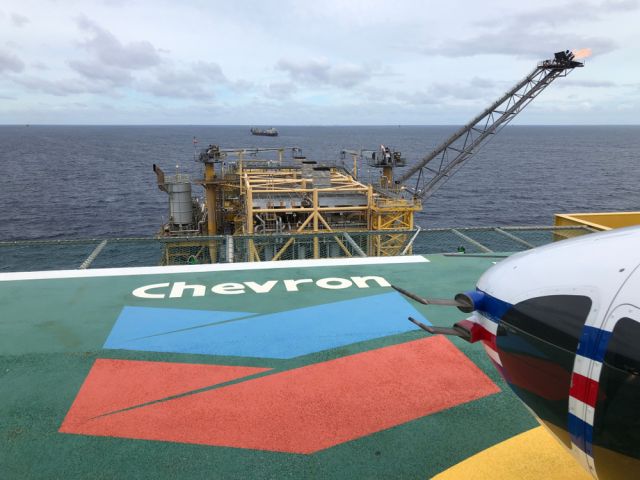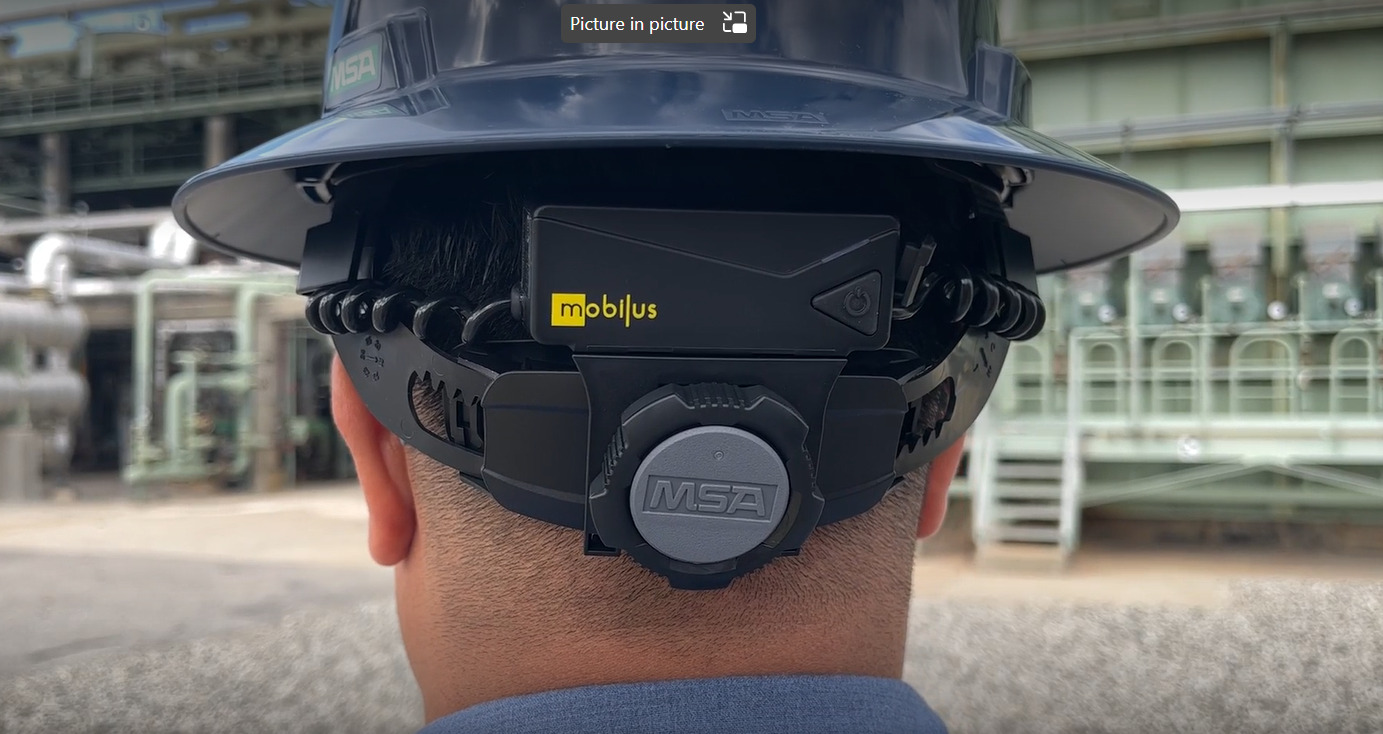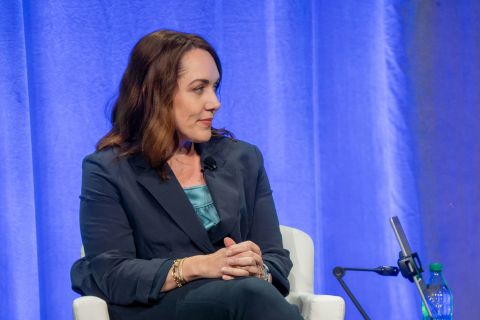
Chevron Technology Ventures argues that working with technology incumbents like itself creates solutions and scales up tech faster, whether its for upstream oil and gas or low carbon. (Source: Shutterstock)
For a quarter of a century, Chevron Technology Ventures (CTV) has bet on tech that could bring either incremental or breakthrough improvements into the industry. Innovations range from the no-brainer variety—visualization software—to the actual skull: using bones to enable two-way audio communication.
“We open doors to the future and we do that by transferring external early stage innovation into the company,” Jim Gable, president of Chevron Technology Ventures and vice president for innovation at Chevron, told Hart Energy.
Rather than trying to develop everything from scratch internally, CTV looks externally for early-stage innovations that, if supported, could give the supermajor a leg up.
“That might be catalysis or seismic processing or data management, downhole engineering,” he said. “It's all about technology, about change, about driving … the future for what we're up to.”
Gable said about 80% of the tech CTV invests in is directly tied to a Chevron strategy, with the other 20% devoted to tech outside the core strategy. For example, CTV invested in a pair of fusion companies a decade ago.
“We invested in carbon capture, and that was not strategic. Now it is very strategic,” he said.
Making things big
One of the big challenges for new tech is scaling it up.
“You have a lot of fantastic entrepreneurs who are coming up with some really interesting breakthrough technologies, but they don't know how to scale,” Gable said.
But entrepreneurs working with incumbents such as CTV can help them break past those barriers, he said.
Whether an innovation suits upstream oil and gas or lower carbon, working with incumbents can help create a solution that fits into an overall operation.
“That's the real advantage that incumbents like us provide—just the scaling capability,” he said. “We know how to make things big.”
Over the course of its 25 years, CTV has learned a lot about scaling technology. A quarter century ago, CTV didn’t necessarily understand how to de-risk and trial technology internally, he said.
What CTV learned was the importance of executing with partners with business unit customers, getting out in the field to solve problems collectively.
“It really is a full-contact sport,” he said.
To CTV, being a good ecosystem partner means helping the smaller companies achieve scale, find investors and find deals.
“A rising tide lifts all boats. It allows you to help everybody in the ecosystem, and then that proves your merits and proves your worth for the future,” Gable said.
Over the years, CTV has invested in more than 140 companies and trialed around 80% of those company solutions internally, he said.
“That type of track record allows us to come across in the ecosystem, not as a big company that wants to own everything for itself, but as the type of valued partner that can really help the external companies succeed,” he said.
He said the attractiveness of an opportunity is a function of the management team, the business model and the technology itself.
The leadership team needs to be realistic about the challenges a technology faces in scaling.
Sometimes tech can be difficult to scale up, require more capital than expected or demand different skills.
“It's that realism and understanding of how the industry works [that] is something we look for,” Gable said. “We aren't necessarily constrained by domain. We'll of course think about, ‘hey, what technology solves problems for our business units?’ We're really more focused on what companies have attractive opportunities.”
Core Energy Fund
Since its inception, CTV has created seven funds in two domains—core energies and lower carbon—along with an incubator.
The Core Energy Fund seeks to improve the efficiency of Chevron’s core business through improved operations and digital technologies. The current fund launched in 2019 with $90 million for such technologies.
With the core fund, CTV initially invested in Seeq Corp. around 2018, according to Seeq’s website. The company offers a visualization platform that aggregates data from different sources to help case engineers’ decision making.
“Now we've got 5,000 deployments internally of engineers and geoscientists using that to make decisions based on, once again, aggregating data sources and presenting it in a time series way. It's a really neat solution,” Gable said.
CTV has also invested in two-way communication developed by U.K.-based Mobilus Labs to improve worker safety in high-noise environments. Chevron deployed hard hats featuring bone-conducting audio technology to enable two-way communication across its operations.
“Your radio's connected through the vibrations on your skull, and it's two-way, not just one-way,” Gable said. “When you talk, you can project to your partner who's also on the same radio system” which addresses hearing safety in high-noise environments.

One of the potential breakthrough technologies CTV has invested in is Svante’s point source carbon capture tech.
“It's a technology where we're leveraging our skills at scaling and commercializing to get to where society needs us to go,” he said.
CTV invested in Svante about 10 years ago and has helped them build a 25-ton per day unit in Chevron’s Bakersfield, California, operation.
“At the same time, [CTV’s] working with them on scaling that up 20, 30, 40 times in the next generation unit,” Gable said.
Future Energy Fund
The current lower carbon fund, which started in 2021, is CTV’s second in that domain. Funded with $300 million, the Future Energy Fund focuses on tech like carbon capture and hydrogen, as well as enablers for mobility such as batteries, materials or the electric drive train and decentralized energy generation.
Incubating tech
The incubator, known as Catalyst, is CTV’s way of diversifying its investment in different levels of technical readiness. Catalyst might support an idea and develop it into a business plan, or help raise a venture round after a company has achieved a commercial or technical milestone.
So far, 31 companies have moved through Catalyst, with CTV investing in two. One, INGU Inc., is now part of the current core fund. INGU developed a sensor ball that floats in a pipeline’s fluid, taking measurements with a sensor package to gather data normally acquired by pigging.
The other, Well Conveyor LLC, developed a slim downhole tractor that can pull tools where they’re needed downhole. The tech entered Catalyst as “nothing more than an entrepreneurial idea, and we helped fund them,” Gable said, noting that CTV is helping the company—which is part of the current core fund—commercialize the product.
Looking forward
CTV is in the final stages of the current fund and is gearing up for its next round, Gable said.
“At some point this spring we'll hear more about that. But those are coming and those domains will be generally the same,” he said. “Once again, thinking about our base business operations, digital, how do you improve lower carbon subsurface and then the future energy side, those same domains around mobility, decarbonization, decentralization and circular economy.”
Recommended Reading
Enverus: 1Q Upstream Deals Hit $51B, but Consolidation is Slowing
2024-04-23 - Oil and gas dealmaking continued at a high clip in the first quarter, especially in the Permian Basin. But a thinning list of potential takeout targets, and an invigorated Federal Trade Commission, are chilling the red-hot M&A market.
EIA: Permian, Bakken Associated Gas Growth Pressures NatGas Producers
2024-04-18 - Near-record associated gas volumes from U.S. oil basins continue to put pressure on dry gas producers, which are curtailing output and cutting rigs.
SilverBow Saga: Investor Urges E&P to Take Kimmeridge Deal
2024-03-21 - Kimmeridge’s proposal to combine Eagle Ford players Kimmeridge Texas Gas (KTG) and SilverBow Resources is gaining support from another large investor.
Mesa III Reloads in Haynesville with Mineral, Royalty Acquisition
2024-04-03 - After Mesa II sold its Haynesville Shale portfolio to Franco-Nevada for $125 million late last year, Mesa Royalties III is jumping back into Louisiana and East Texas, as well as the Permian Basin.
‘Monster’ Gas: Aethon’s 16,000-foot Dive in Haynesville West
2024-04-09 - Aethon Energy’s COO described challenges in the far western Haynesville stepout, while other operators opened their books on the latest in the legacy Haynesville at Hart Energy’s DUG GAS+ Conference and Expo in Shreveport, Louisiana.






